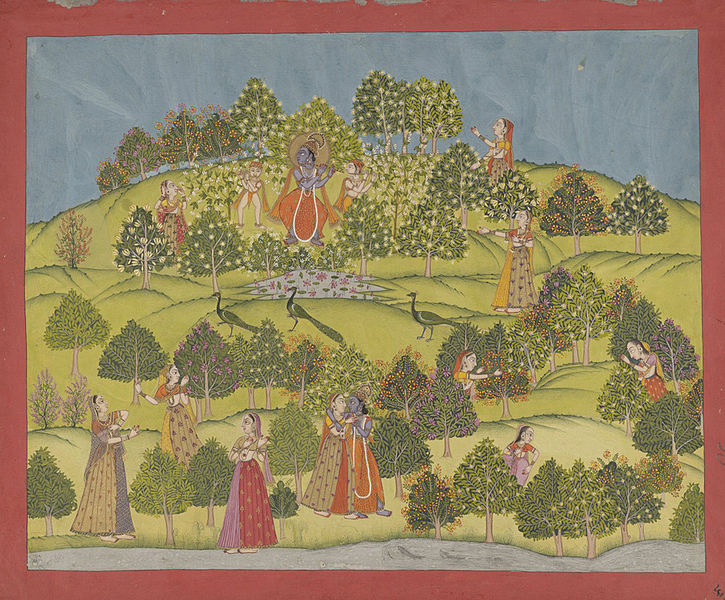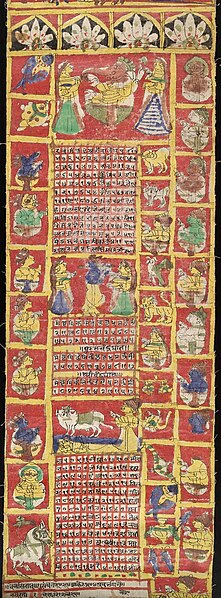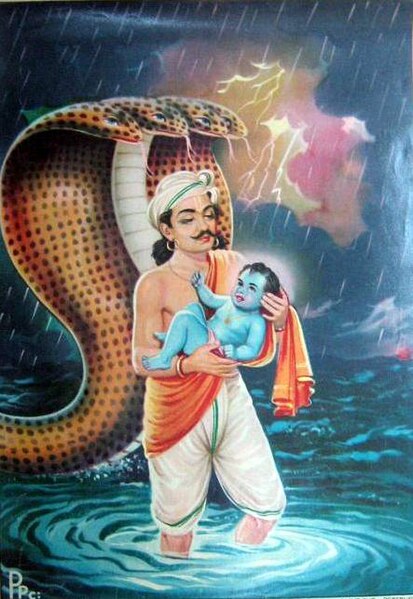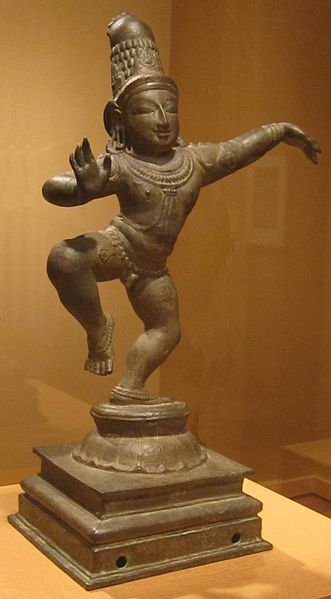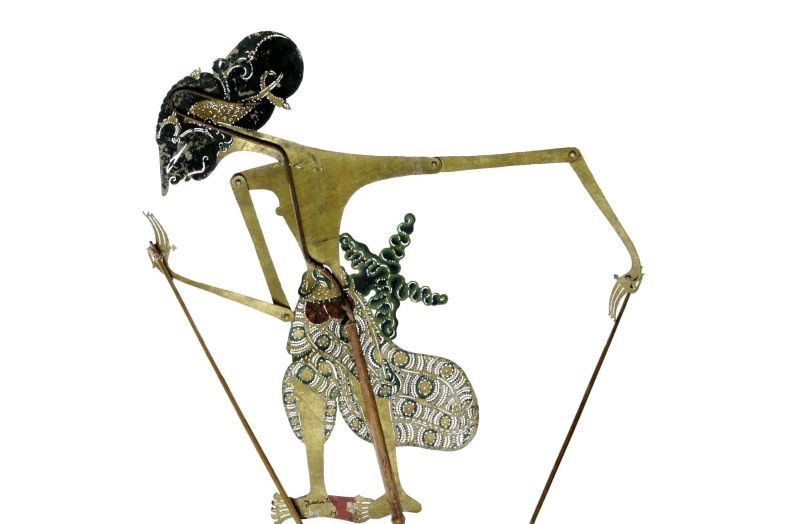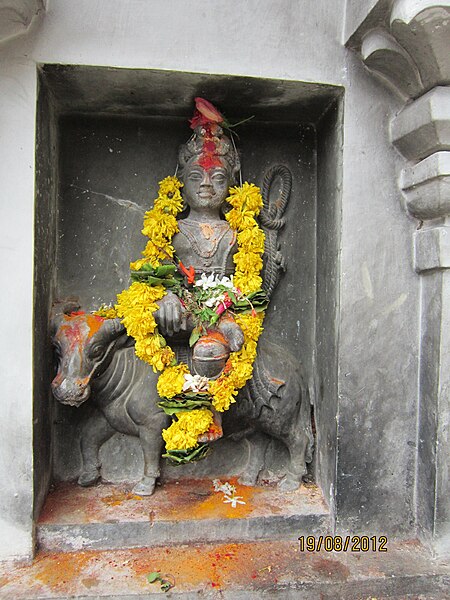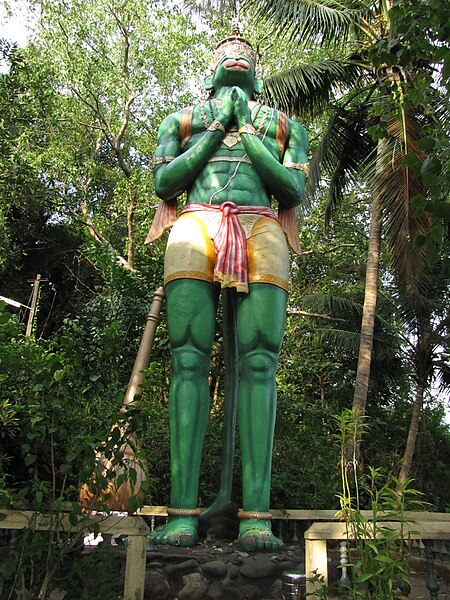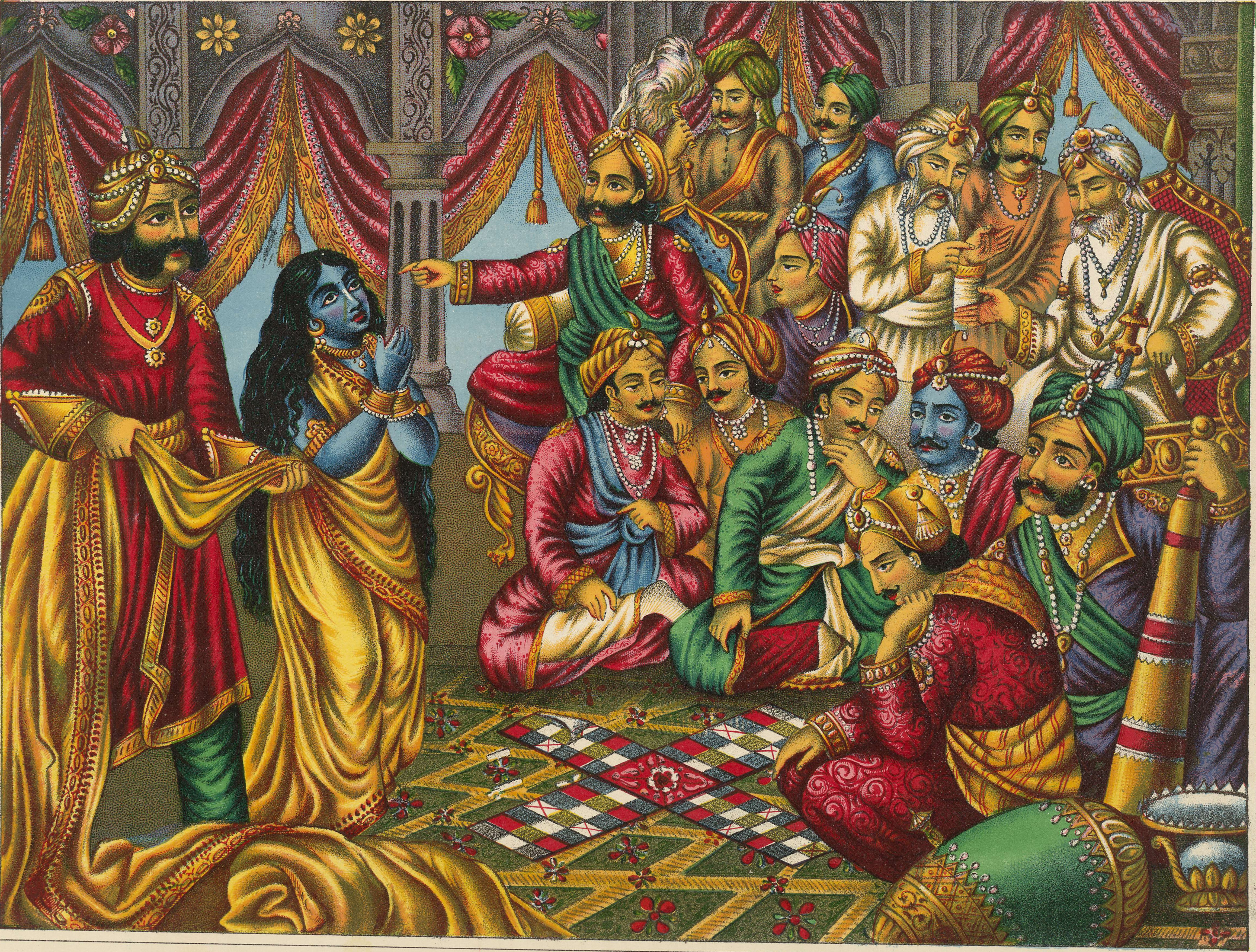Kamsa had grown extremely frustrated over the years for no matter what he tried, his attempts to end Krishna's life had failed. It seemed there was no hope. Still, Kamsa hoped that either the prophecy had been wrong or that he would find a way to end Krishna's life and prevent the prophecy from occurring. All the the times Krishna had survived against all odds led Kamsa to believe the prophecy was true though and the boy was only being kept alive so that he could fufill the prophecy. Kamsa had one final plan. He sent his soldiers far and wide to find someone that looked exactly as he did. The goal was to have Krishna kill the lookalike and thus the prophecy could perhaps be fulfilled.
An older man who looked like Kamsa was found and brought to the palace and dressed in royal Garb and Kamsa himself dressed as a lowly servant and served his lookalike, but secretly he still gave orders through whispers to his soldiers and servants. Kamsa had his lookalike issue a great proclamation throughout the land that summoned the man known as Krishna to the palace and great wealth was promised to whomsoever was able to get Krishna to the palace. It was Kamsa's belief that simply escorting the man wouldn't let unnatural luck save the man.
Krishna heard of this proclamation and decided to go himself to claim the great wealth for his family but his mother and father begged him not to go. "It will be your death," they said.
"Fear not, mother and father," Krishan said. "I will be fine. The gods watch out for me." And they let him leave though they mourned in their hearts for their son.
Krishna came to the great palace and he was escorted into the throne room where Kamsa's lookalike was sitting on the throne.
"Krishna, welcome to my palace. I have heard of your abilities and would like to personally challenge you to a duel. If you shall win, you may take my place on the throne." Krishan knew he could not deny the duel or he would simply be killed on the spot and thus he agreed. The date and time was set. The duel was to occur the following morning shortly after sunrise.
Krishna was escorted to a grand room and he was brought expensive foods and drinks but he did not take them. Kamsa had had it all poisoned but again Krishna was saved by luck. He was simply not hungry or thirsty that night.
The next morning came and Krishna was escorted from his room and into a grand arena where Kamsa's lookalike was already waiting in the center in golden armor, carrying a massive sword. Krishna wore only a simple tunic and belt.
"Choose your weapon!" Kamsa shouted and suddenly many slaves ran at Krishna all holding various weapons. They stopped a few feet from him and held them out to him for the man to pick. Krishna was not strong and his deformity meant he couldn't use a bow or arrow well and so he took a simple wooden spear. He did not expect to win this fight but he was prepared to die. He had lived a good life and survived against great odds to get so far. It was time. The slaves retreated back to their hidden corners and the two men stood in the arena. Suddenly, a great horn sounded and the battle began. Kamsa charged forward towards Krishna but Krishna did not flee. He lifted the spear up and took aim, prepared to launch it into his enemy. Kamsa grew closer and closer until he was almost on top of Krishna. Krishna let loose the spear and it flew straight but it completely missed Kamsa and soared far past him, impaling a single servant hiding against the outer wall. All the servants and soldiers shouted for it had been the real Kamsa that had been struck. The lookalike stopped just short of cutting Krishna down and he saw where the king lay dead. He dropped his sword and fell to his knees in front Krishna, the new king. And thus, the prophecy was fulfilled.
Authors Note: I wanted to finally end this series before I finished this class and so I put together this ending. I tried to make it seem like Krishna would finally die in this one but then there's the big surprise ending to tie everything up. It probably could have used a bit more information at the ending but I'm satisfied with it for the most part. I hope you enjoyed!
Bibliography: Epified Krishna, link
(Avatars of Vishnu, wikimedia commons)


